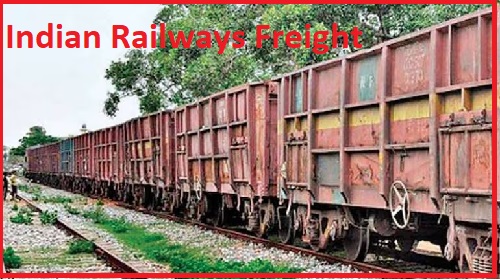
(Photo : Indian Railways )
Indian Railways Freight Network increases in volumes
- India's freight volume has doubled this year due to the new dedicated freight corridors (DFCs).
- The operationalisation of an additional 522 kilometres of the DFC network in 2023-24 has been a key driver of this growth.
- A senior DFCCIL official has projected a further 20 per cent jump in freight traffic once the remaining 102 km stretch on the western DFC is completed by the end of 2025.
- The shift of goods traffic to the DFCs has helped to decongest traffic on the conventional Delhi-Mumbai and Delhi-Kolkata routes, enhancing the railways' efficiency.
India's logistics landscape is witnessing a significant transformation with the volume of goods movement on the new dedicated freight corridors (DFCs) of Indian Railways doubling in the current financial year compared to 2023-24. This development, as per the data compiled by the Dedicated Freight Corridor Corporation of India Ltd (DFCCIL), indicates a robust growth in the country's freight volume.
The net tonne kilometres (NTKMs), a measure of freight volume, surged to 62,282 million between April and October 2024. This is a substantial increase from 32,164 million NTKMs or 151 million NTKMs per day during the same period in 2023. The increase is a robust 292.4 million NTKMs per day, indicating a significant surge in goods movement.
The operationalisation of an additional 522 kilometres of the DFC network in 2023-24 has been a key driver of this growth. The expansion of the network has facilitated the movement of goods, contributing to the increase in NTKMs.
DFCs: A Game Changer in India's Logistics Landscape
A senior DFCCIL official has projected a further 20 per cent jump in freight traffic once the remaining 102 km stretch on the western DFC is completed by the end of 2025. This projection is based on the current growth trend and the anticipated increase in goods movement with the completion of the additional stretch.
The traffic earnings for 2024-25 are also expected to surpass previous records by a significant margin. This is a testament to the successful implementation of the DFCs and their impact on the country's logistics landscape.
There has been a steady shift of freight traffic from the traditional railway routes to the DFCs. As many as 350 trains per day are already being run across the new network. This number is expected to increase further as the corridors are designed to run an average of 480 trains per day.
The Impact of DFCs on Conventional Routes
The DFCCIL's mandate was to take over 70 per cent of the railways' traffic on the sections running parallel to eastern DFC and western DFC. In the eastern DFC, which has been fully commissioned, the traffic has already crossed 80 per cent. On the western DFC, the figure stands at around 60 per cent. This shift of goods traffic to the DFCs has helped to decongest traffic on the conventional Delhi-Mumbai and Delhi-Kolkata routes, enhancing the railways' efficiency.
The 1,506-km western DFC mainly carries containerised cargo, cement, petroleum products, and trucks-on-train. The eastern corridor's 1,337-km segment caters to the movement of heavy bulk cargo such as coal, iron, steel, fertilisers, foodgrains, and containers.
The final leg of the western corridor, stretching from Vaitarna to Jawaharlal Nehru Port (JNPT), has encountered delays due to execution challenges. Initially awarded to Tata Projects in 2017, progress on this segment lagged, leading to contract termination by DFCCIL in 2022. However, a revised agreement saw Tata Projects recommitting to accelerated construction to meet new deadlines.









